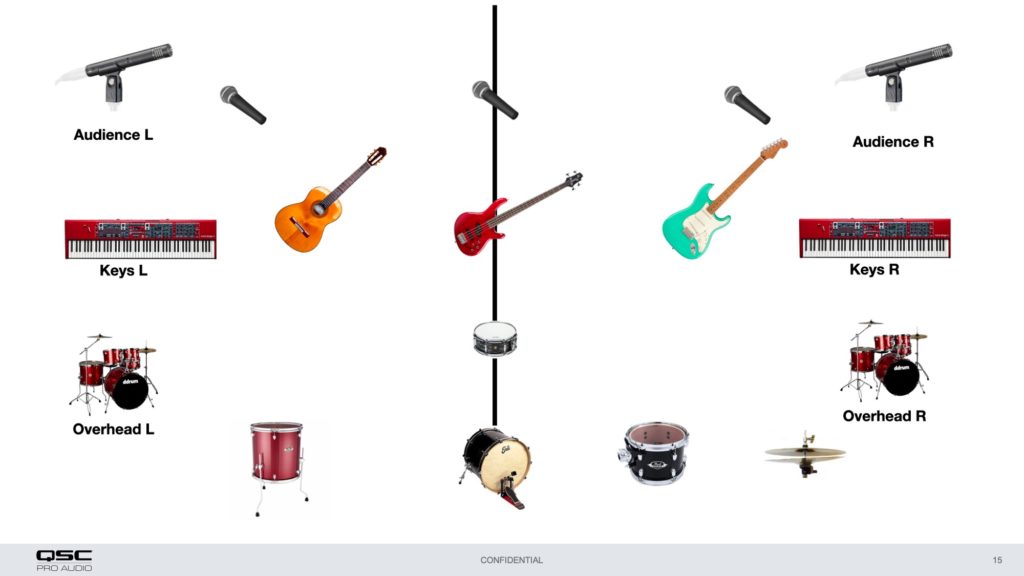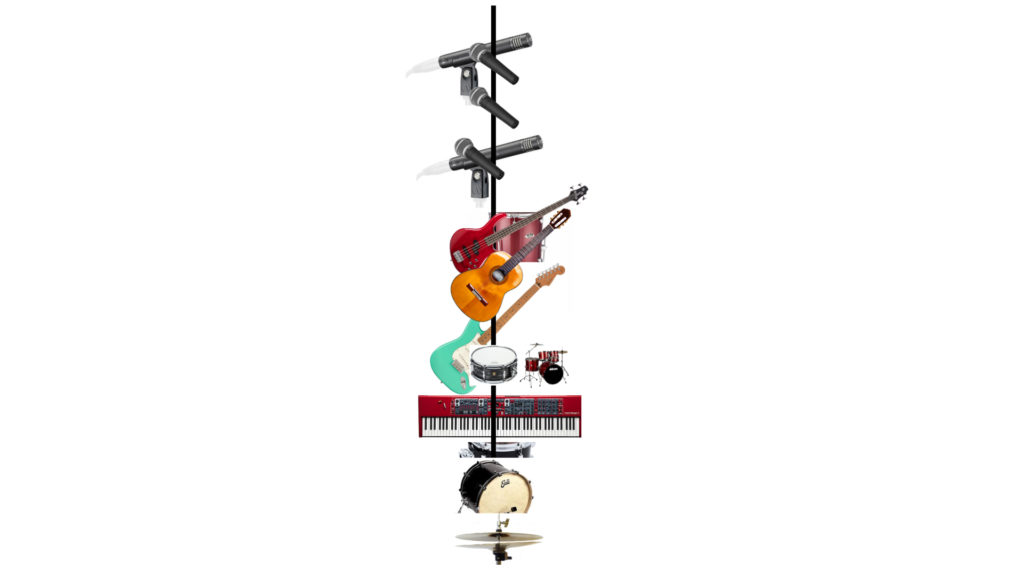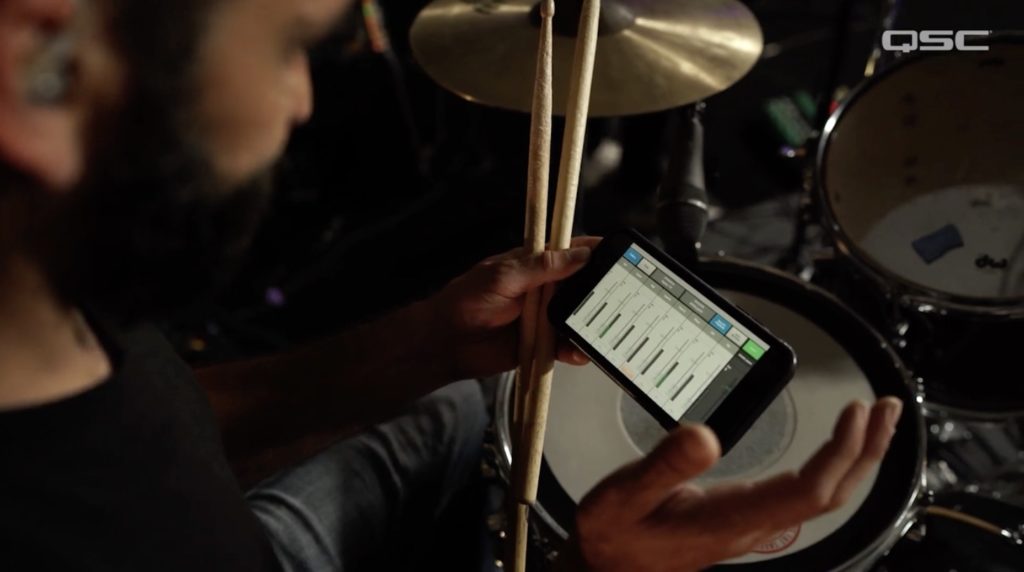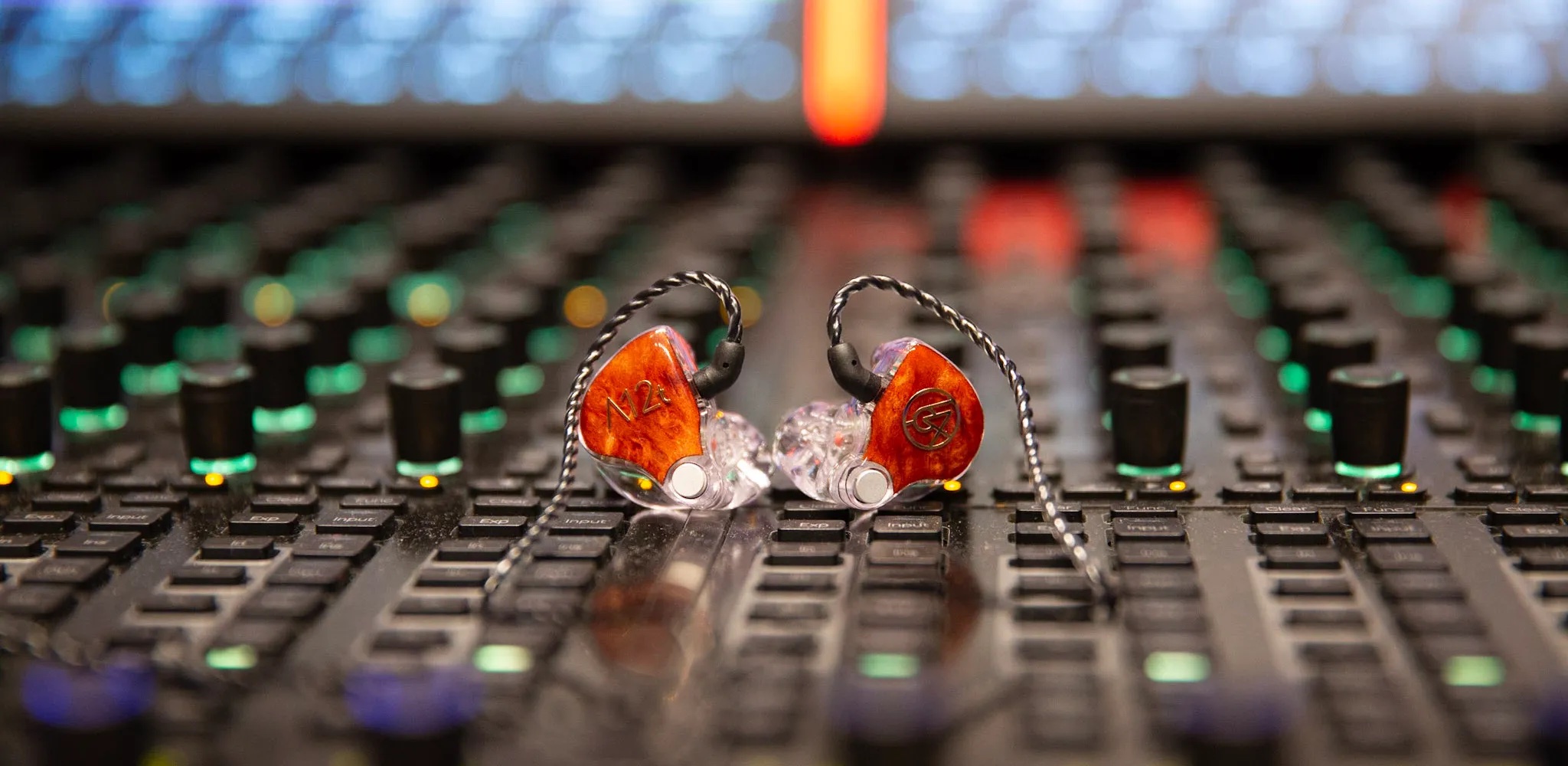When it comes to using in-ear monitors, there are two camps of thought; Those who like them and those who don’t. Either way, many musicians will be confronted with the prospect of having to use in-ear monitors (IEMs) at some point. For example, a venue that requires the volume threshold to be kept under a certain dB level.
The Benefits of In-Ear Monitors vs Floor Monitors
Optimal Volume Levels- Floor monitors often result in volume wars between the amplified and the unamplified. Singers, acoustic guitarists, and keyboardists can’t hear themselves over amplified electric guitarists and bassists, let alone over the drums. So, they ask, “Can you turn me up?” With in-ear personal monitors, it’s possible to achieve studio-quality sound in a live-sound context and the musician can choose what they want to hear.
Personal Control- For the musician, perhaps the most empowering part of in-ear monitoring is having direct control over what they hear. If you want more of something, turn it up. If you want less of something, turn it down…and none of the other musicians need to know that you didn’t want to hear them. No hard feelings. lol
Reduced Vocal Strain- When singers can’t hear themselves over the stage mix, which often happens with floor monitors, they push their voices too hard, damaging their vocal cords. In-ear personal monitors allow the singer to hear themselves clearly and distinctly without having to belt to overcome the stage noise.
Elimination of Feedback- Feedback happens when amplified sound from a loudspeaker (most often a floor monitor) is picked up by a microphone and re-amplified. IEMs make this scenario moot since they seal the “loudspeakers” in your ears, breaking the feedback loop.
Clean Audience Mix- IEMs create an almost silent stage allowing for the front of house engineer ultimate control of the house mix. The engineer is no longer dealing with muddy sound being thrown off the stage from loud floor monitors. He or she can contour a beautiful sounding, present mix without overwhelming the room with excessive volume. In a space with hard surfaces using IEMs will solve about 70% of issues with intelligibility.
For musicians who have never used IEMs, this can be a daunting process. Believe me, I get it. Learning how to properly set up and use in-ear monitors takes some education and practice. With this in mind, let’s dive into some best practices for using IEMs.
Listen in Stereo
The absolute best and most natural way to use in-ear monitors is to listen in stereo. Our ears are made for stereo listening, so a stereo mix is a more natural listening environment. When you’re able to listen to a natural-sounding mix, you’re more likely to listen at a lower volume. This means healthier ears in the long term.
Many digital mixers offer personal monitor mixers already set up for stereo listening. They are essentially stand-alone mini mixers that live at the position of each performer. The musician can tailor their monitor mix easily and quickly via networked solution from the digital mixing console.
The other option is to provide stereo in-ear mixes directly from the digital mixing console itself. In this scenario, each in-ear mix will require 2 aux/bus output channels linked together in a stereo pair. Many digital mixing consoles come with a certain number of stereo aux/bus channel preset right out of the box. In other scenarios, you will need to create the stereo pair. Here’s how I do that on my QSC TouchMix 30 Pro mixer.
Panning for Gold
When dialing in a mix for your stereo in-ear monitors, instruments should be panned across the stereo field. Panning helps create delineation between instruments, allowing the musician to easily reference what they need. Here’s a video with more information on where musicians might pan the instruments in a mix. Ultimately, where instruments are panned in a mix is up to the musician so that they can have the best reference possible for themselves.

Use Audience Mics
One of the biggest complaints I hear from musicians is that in-ear monitors make them feel cut off from the audience. Most ear buds create a seal cutting out a very large amount of ambient noise which musicians have become so accustomed to. The solution to this is the use of audience mics.
These are microphones, usually condenser mics that have been set up on the left and right side of the stage facing towards the audience. These can be panned hard left and right. The musicians can add these audience mics to their in-ear mix at whatever volume they might need to feel and hear the presence of the audience.
When a Mono In-Ear Mix is the Only Option
When set up and dialed in properly stereo in-ear monitors can be one of the most enjoyable experiences a musician will have. However, equipment constraints may necessitate the use of mono in-ear mixes (a mix coming from one channel instead of two). In this scenario our listening experience becomes one big wall of sound mixed up the center with little distinction between instruments. We weren’t created to process audio in this manner, which makes mono in-ear monitors more difficult to get used to.

When referencing a mono in-ear mix, it’s best to add only what you absolutely need in order to play well. You don’t get to mix a record in your ears when you’re working with a mono mix. Here’s a video on how to best set a mono in-ear mix.
Protect Your Hearing
A common practice among many musicians using IEMs, especially those referencing a mono mix is to leave one earbud in and the other out. They do this so that they can hear the ambient noise around them. But this is an unhealthy practice and contributes to hearing loss over time.
Musicians who do this will tend to run their volume in that one ear 6 to 10 dB louder than if both ear buds were being used. Remember that a ten dB increase in sound intensity means doubling the perceived loudness. To give yourself an idea of just how loud your earbud volume is, stick the other earbud back in for a minute while the band is playing. This will be a good reality check as it will be painfully loud.
Choosing the Right Earbuds
How many drivers are enough? This will depend on your application. With standard single-driver in-ears, the burden of re-creating the entire frequency spectrum rests squarely on one driver. While there are some truly impressive single-driver models out there, the fact is that there’s only so much a single driver can do, resulting in a limited frequency range, usually noticeable in the sufficiency of the low end. Vocalists and acoustic guitar players might be completely happy with single driver earbuds.
As you step up to more drivers, each one is separated by a passive crossover allowing one driver to power a smaller portion of the frequency spectrum. The more drivers that are packed into an earbud means better overall efficiency of each individual driver. Even if they cover the exact same frequency range, every additional driver distributes the workload more broadly, allowing each to function more optimally. IEMs with 3 to 6 or even 8 drivers, deliver deeper lows (a top priority for bass players and drummers), clearer highs, and more articulate mids than you’ll get from earbuds with only one or two drivers.
Universal fit or custom molded? Universal-fit ear buds are more economical, but I’ve found they can be uncomfortable. A pair of earbuds usually comes with various sizes of rubber or foam tips. You’ll want to experiment to discover which version forms the best seal without popping out of the ear.

If you’re going to regularly spend many hours wearing IEMs, then the sheer comfort of custom-molded housings is likely worth the investment alone. The process involves making an appointment with an audiologist to have impressions made of your ear canals (a process where an impression material is inserted into the ear canal to create a hardened mold that is removed and used to shape the custom earplugs). Another advantage of custom molds is acoustic isolation. Custom-molded earpieces actually fit snugly inside the outer ear, allowing the housing itself to bolster their isolation in ways universal-fit IEMs can’t provide.
Making the Transition to IEMs
For those who were raised on floor monitors, making the transition to IEMs will most likely be met with some resistance. I would suggest having your band practice with IEMs for several rehearsals before using them live. There are many adjustments that will need to be made for each musician in order to create a mix that allows for the best performance. Your band will essentially be retraining their brains to adjust to a new listening environment and this takes time and patience.

If musicians are using personal monitor mixers or other devices to adjust their own mix, it’s very important that they are trained not only how to use the gear but also what to listen for when they are setting their mix. Here’s a video I have created to help your band get started with using IEMs.
Golden Preciado
Latest posts by Golden Preciado (see all)
- The Sound Behind the Scenes: The Psychology Behind Navigating Personalities - April 8, 2025
- Making the Transition from Floor Wedges to In-Ear Monitors - October 22, 2024
- Lavalier (Lapel) vs Headset Microphones - August 5, 2024

Our band owns and uses the Touchmix16. We tour regularly and use the mixer for several years now at multiple venues. Everyone uses IEMs and our mix is great (both FOH and IEMs). We take full advantage of all the benefits described in this article. Great FOH sound, ear protection, low stage noise, etc. And we all love using the phone app for IEM control. Great article.
Hello there! This is my first visit to your blog! We are a group of volunteers and starting
a new project in a community in the same niche.
Your blog provided us beneficial information to work on. You have done a marvellous job! https://Zeleniymis.Com.ua/
Greetings from Carolina! I’m bored to tears at work
sso I decided to check out your blog on my iphone during luncch break.
I love the knowledge you provide here and can’t wait to take a look whenn I get home.
I’m shocked at how fast your blog loaded on my cell phone ..
I’m not even using WIFI, just 3G .. Anyways, awesome
site! https://Tri1Ls.Webflow.io/
I was “resistant” to using IEMs at first. I play Bluegrass standup Bass and after the first time being able to hear precisely if I was playing my Bass in perfect pitch, I never want to go back to just an amplifier on stage.. it’s not precise enough to hear the proper pitch of those low frequencies. I’ll never go back now, even if it’s a super small backyard gig.